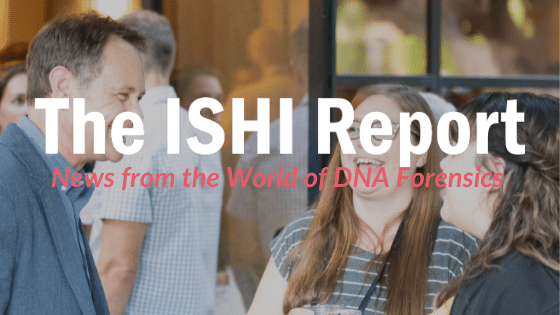This Week in Forensic Science

No one has hours to scour the papers to keep up with the latest news, so we’ve curated the top news stories in the field of Forensic Science for this week. Here’s what you need to know to get out the door! Brutal Killing of a Mother and Son in 1994 is Solved […]
February 2022 Issue of The ISHI Report Now Live

Though it’s hard to imagine a Spring thaw just yet, the ISHI team is already thinking ahead to the end of October when we’ll again gather for our annual conference. This year’s meeting will be held at the Gaylord National Harbor, just outside of Washington D.C. To accommodate those unable to travel, we will once […]
A Leadership Perspective: From Bench Criminalist to Lab Director

Brian Hoey, the Lab Director at the Missouri State Highway Patrol, recently presented at one of our Tech Tours held in Seattle. In his talk, he shared insights from his lengthy career in forensics. He is a twenty-eight-year veteran of the Missouri State Highway Patrol Crime Laboratory. Brian worked much of his career as a […]
The Missing Piece Episode 8: Stephanie Isaacson

Advanced DNA testing has revealed Darren Roy Marchand as the suspected perpetrator in the brutal murder of 14-year-old Stephanie Isaacson from Las Vegas. In June 1989, 14-year-old Stephanie Isaacson headed out on her morning walk to Eldorado High School. The Las Vegas teenager frequently took a shortcut through a vacant sandlot […]
This Week in Forensic Science

No one has hours to scour the papers to keep up with the latest news, so we’ve curated the top news stories in the field of Forensic Science for this week. Here’s what you need to know to get out the door! Steven Downs, of Auburn, Convicted in 1993 Killing of Woman in […]
Genetic Genealogy for Cold Case and Active Investigations: 2021 Update

Today’s blog is written by guest blogger, Ellen McRae Greytak, Director of Bioinformatics, Parabon Nanolabs. Reposted from The ISHI Report with permission. Investigative genetic genealogy (IGG) has taken the forensics and law enforcement worlds by storm, closing hundreds of cases that may never have been solved otherwise. In 2019, approximately one year after […]
Workshops Announced for ISHI 33

Registration is now open for the world’s biggest symposium focused on DNA typing for human identification. You can also participate in one of ten workshops offered before and after the ISHI general session. Workshops will appeal to both seasoned forensic professionals, newly minted DNA analysts, and those in the forensic genetic genealogy field. […]
This Week in Forensic Science

No one has hours to scour the papers to keep up with the latest news, so we’ve curated the top news stories in the field of Forensic Science for this week. Here’s what you need to know to get out the door! St. Clair County Sheriff Using DNA Technology to Investigate 2003 Homicide […]
Women Advancing Forensics: Amber Vandepoele

Meet some of the women who are propelling the field of forensic science forward. In this interview, we meet Amber Vandepoele, a student at Syracuse University. Amber’s interest in forensic science began in high school when she chose to take a class in forensic science over physics. Learning from guest speakers about what daily […]

